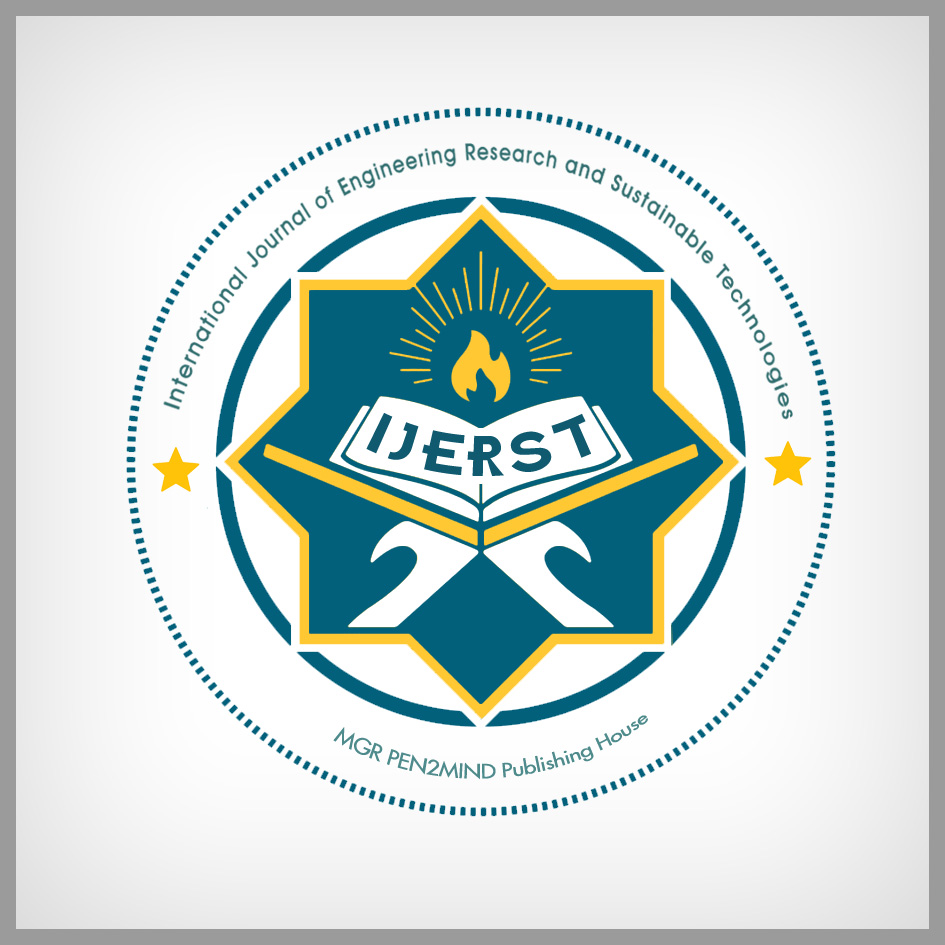ANALYZING VULNERABILITIES MALFUNCTIONS AND SECURITY BREACHES IN ELECTRONIC VOTING MACHINES
DOI:
https://doi.org/10.63458/ijerst.v3i3.120Keywords:
Electronic Voting Machines (EVMs), security vulnerabilities, election integrity, vote manipulation, cryptographic failures, software vulnerabilities, hardware tampering, intrusion detection, encryptionAbstract
A project analyzing electronic voting machines (EVMs) identifies vulnerabilities, malfunctions, and security breaches that can compromise election integrity. While EVMs are valued for their efficiency, they are susceptible to security threats like software vulnerabilities, cryptographic failures, and physical tampering. The study examines hardware and software weaknesses, such as buffer overflow attacks and weak encryption, alongside malfunctions from power failures and hardware faults, assessing their impact on voting accuracy. Through simulations and testing, the project reveals risks of vote manipulation, data loss, and election disruption. Recommendations include stronger encryption, regular audits, intrusion detection, and robust error handling, emphasizing the need to secure EVMs, protect the electoral process, and maintain public trust.
References
Saksena, N. S. (1993). India, Towards Anarchy, 1967–1992. Abhinav Publications. pp. 38–39. ISBN 978-81-7017-296-3. Archived from the original on 6 August 2024. Retrieved 21 May 2019.
Shukla, Alok (2018). EVM Electronic Voting Machines. Lead start. pp. 70–73. ISBN 978-9-35201-122-3. Archived from the original on 6 August 2024. Retrieved 22 May 2019.
Vaishnav, Milan (2017). When Crime Pays: Money and Muscle in Indian Politics. Yale University Press. pp. 87–88. ISBN 978-0-300-21620-2. Archived from the original on 6 August 2024. Retrieved 23 July 2024.
Brunela Kullolli,2024,”Hacker Attacks on Electronic Election and Vote Counting Systems: Estimation of Damages and Methods of Protection,” Pakistan Journal of Criminology, Vol. 16, No. 03
Jawad Mohmmad et.al;(2023); Anti Fraud Mechanism Based Voting Machine With Three Stage Authentication Methods was published in ITM Web of Conferences, Volume 57, Article Number 01010.
R. Sherin Nachiya and Hanushka Srinivasan titled, (2o23), "A Public Opinion On Effectiveness In Ballot Paper Voting Compared To EVM - Spl. Reference To Chennai, 2023" is published in the journal Indian Journal of Public Opinion Research. It appears in Volume 12, Number 3, on pages 45-60.
V. Anitha et.al,(2023),”Transparent voting system using blockchain” Measurement: Sensors Volume 25, February 2023, 100620 DOI: https://doi.org/10.1016/j.measen.2022.100620
Sindhu Rajendran et.al,2023,” Kumar, Cost Effective Electronic Voting Machine,2023,” Conference: 2023 7th International Conference on Computation System and Information Technology for Sustainable Solutions (CSITSS), DOI:10.1109/CSITSS60515.2023.10334246 DOI: https://doi.org/10.1109/CSITSS60515.2023.10334246
E. Jithendra Reddy et.al,2024,” E-Voting System Using Block Chain,” 2024 2nd International Conference on Artificial Intelligence and Machine Learning Applications Theme: Healthcare and Internet of Things (AIMLA), DOI: 10.1109/AIMLA59606.2024.10531437 DOI: https://doi.org/10.1109/AIMLA59606.2024.10531437
Sadam Hussain et al ;(2024);Digital Inclusion through UX Design: A Case Study on Electronic Voting by. is published in E3S Web of Conferences, Volume 507, Article Number 01010.
Nicu Neculache et.al (2024) An analysis of a scheme proposed for electronic voting systems” was published in E3S Web of Conferences, Volume 507, Article Number 01037.
Zakiah Mohd Yusoff et al(2024) Fingerprint biometric voting machine using internet of thing is published in E3S Web of Conferences, Volume 507, Article Number 01037 . DOI: https://doi.org/10.1051/e3sconf/202450701037
Nilberto et al (2023) Evaluating the Reliability of Different Voting Schemes for Fault Tolerant Approximate Systems. was published in International Journal of Applied Engineering Research, Volume 15, Number 1.
Saman Shojae Chaeikar et al(2024)Security Principles and Challenges in Electronic Voting was published in E3S Web of Conferences, Volume 507, Article Number 01010.
Pranava Madan,et.al,(2019), A Review Paper on Arduino Research Papers, International Journal for Research in Applied Science & Engineering Technology (IJRASET) ISSN: 2321-9653; IC Value: 45.98; SJ Impact Factor: 6.887 Volume 7 Issue III, Mar 2019- Available at www.ijraset.com
J. Brodkin, '11 Arduino projects that require major hacking skills-or a bit of insanity',:http://arstechnica.com/informationtechnology/2013/05/11-arduino-projects-that-require-major-hacking-skills-or-a-bitof-insanity/2/. [Accessed: 25-Nov-2015].
Badamasi, Y.A., "The working principle of an Arduino," in Electronics, Computer and Computation (ICECCO), 2014 11th International Conference on, vol., no., pp.1-4, Sept. 29 2014-Oct. 1 2014. doi: 10.1109/ICECCO.2014.6997578 [10] LilyPad Arduino, 'LilyPad Arduino', 2015. [Online]. Available: http://lilypadarduino.org/. [Accessed: 13-Sep-2015]. DOI: https://doi.org/10.1109/ICECCO.2014.6997578
Prinz, Peter; Crawford, Tony (December 16, 2005). C in a Nutshell. O'Reilly Media, Inc. p. 3. ISBN 9780596550714.
Ward, Terry A. (August 1983). "Annotated C / A Bibliography of the C Language". Byte. p. 268. Retrieved January 31, 2015.
Rivas DDas PSaiz-Alcaine JRibas-Xirgo L(2018)Synthesis of Controllers from Finite State Stack Machine Diagrams2018 IEEE 23rd International Conference MZ on Emerging Technologies and Factory Automation (ETFA)10.1109/ETFA.2018.8502451(1179-1182)Online publication date: 4-Sep-20. DOI: https://doi.org/10.1109/ETFA.2018.8502451
Downloads
Published
How to Cite
Issue
Section
ARK
License
Copyright (c) 2025 B.Ramesh, Dineesha Varma, Kavin K, Anjali Kumari

This work is licensed under a Creative Commons Attribution 4.0 International License.
License Statement
This work is licensed under a Creative Commons Attribution 4.0 International License (CC BY 4.0).
Authors retain copyright of their articles and grant International Journal of Engineering Research in Science and Technology (IJERST) the right of first publication.
This license permits unrestricted use, distribution, and reproduction in any medium, provided the original author and source are credited.
The journal encourages open access and supports the global exchange of knowledge.




